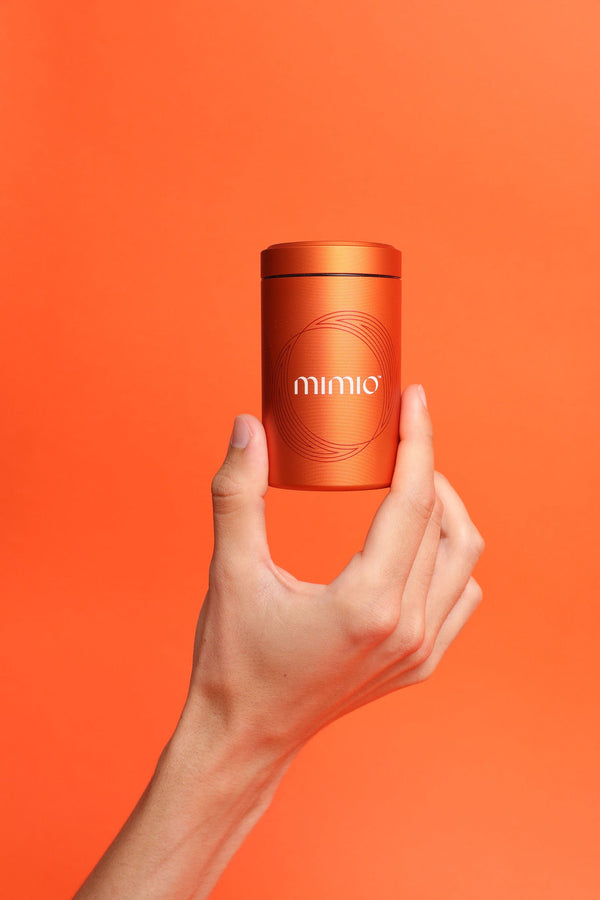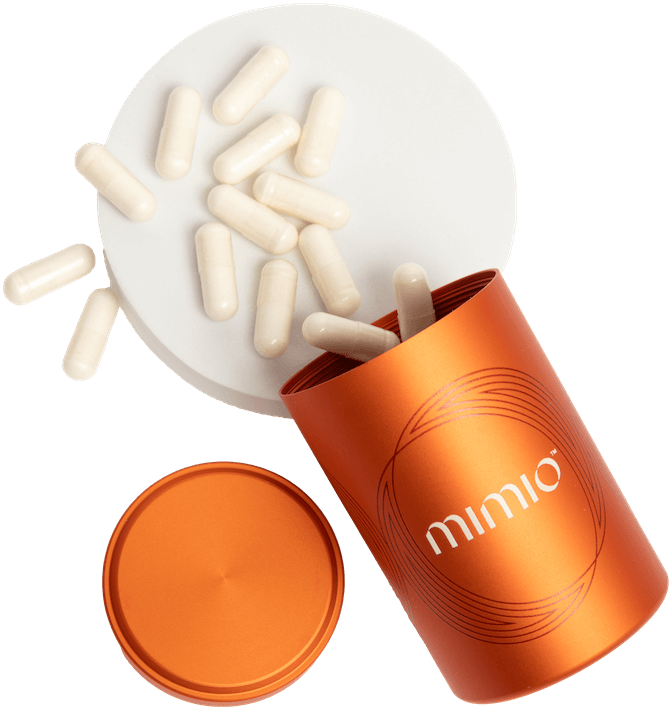Inspired by Nature: Exploring Biomimicry Products in the Market
Nature’s Designs Are Still Winning
What do Velcro, bullet trains, and cutting-edge longevity supplements have in common?
They all started with nature.
Biomimicry is the practice of learning from and mimicking nature’s time-tested strategies to solve human challenges. But this isn’t a recent revelation. Humans have been borrowing from nature’s playbook for centuries—long before we had labs, patents, or even the word “science.”
Today, biomimicry is a driving force in everything from medicine to architecture, technology to nutrition. And as we explore the rise of biomimicry products in the market, one thing becomes clear: the future isn’t just high-tech—it’s bio-smart.
What Is Biomimicry?
Biomimicry (from the Greek bios, meaning life, and mimesis, meaning imitation) is the design and production of materials, structures, and systems modeled on biological entities and processes.
Nature has solved every problem we face—efficient energy use, waste management, regeneration, even communication—through billions of years of evolution. Why reinvent the wheel when the answers are already in the rainforest, ocean, or even your own body?
Janine Benyus, a pioneer in the field, defines biomimicry as “innovation inspired by nature.” And when done right, it’s not just functional—it’s sustainable, elegant, and efficient.
Categories of Biomimicry Products
To understand the scope of biomimicry in today’s world, let’s break it into key sectors:
-
Health & Medicine
-
Materials & Textiles
-
Architecture & Engineering
-
Technology & Robotics
-
Energy & Sustainability
-
Consumer Products & Supplements
Let’s explore the standout innovations in each.
1. Health & Medicine: Healing with Nature’s Wisdom
Nature’s healing processes are some of the most complex and effective in existence—and modern medicine is learning how to harness them.
Mimio Biomimetic Cell Care
Let’s start with a game-changer: Mimio Biomimetic Cell Care.
Inspired by the regenerative effects of a 36-hour fast, Mimio is a biomimetic supplement that activates the body’s natural healing and longevity systems—without requiring actual fasting. Think:
-
Enhanced autophagy
-
Reduced inflammation
-
Boosted mitochondrial performance
It’s a supplement modeled after what your own biology wants to do—clear out damaged cells and regenerate.
This is biomimicry at its most intimate: using nature’s blueprint to enhance human health from the inside out.
Salamander-Inspired Regeneration
Scientists are studying how salamanders regenerate limbs to improve human tissue healing. This research is driving innovations in burn recovery, post-surgical healing, and even spinal cord repair.
Shark Skin & Antibacterial Surfaces
The micro-patterns on shark skin prevent bacterial adhesion. Hospitals are now using this structure to create bacteria-resistant surfaces and equipment, reducing infection rates without chemical disinfectants.
2. Materials & Textiles: Fabric that Thinks
Nature’s materials are lightweight, strong, adaptive, and sustainable. Modern products are catching on.
Spider Silk by Bolt Threads
Synthetic spider silk mimics the real thing’s strength and flexibility without harming spiders. It’s now being used in clothing, shoes, and even sutures.
Lotus Effect Coatings
Inspired by the self-cleaning surface of the lotus leaf, these nanocoatings are hydrophobic, meaning they repel water and dirt—great for windows, solar panels, and rain gear.
Penguin Feather Insulation
Outdoor clothing brands are experimenting with structures inspired by penguin down—tiny, overlapping barbs that trap heat better than synthetic insulation.
3. Architecture & Engineering: Blueprints from Biology
Architecture is shifting from hard edges and cold materials to forms that breathe, bend, and adapt—just like nature intended.
Termite Mound Cooling (Eastgate Centre, Zimbabwe)
Termites build mounds that maintain constant internal temperature. Engineers used this principle to create a building that stays cool without air conditioning.
Biophilic Design
Designs that mimic forest canopies, branching rivers, and shell structures are not just beautiful—they’re energy-efficient and mentally restorative.
Bird Bone Structures
Lightweight yet strong, bird bones inspired architectural frameworks that are both flexible and sturdy, used in bridges and stadiums.
4. Technology & Robotics: Movement That Mimics Life
Why design from scratch when nature’s biomechanics are near-perfect?
Soft Robotics (Inspired by Octopus Arms)
Soft, flexible robots can now grasp delicate objects or perform surgery thanks to the design of cephalopod limbs.
Swarm Technology
Drone algorithms are now being modeled on the flocking behavior of birds or swarming insects—helping machines communicate, coordinate, and navigate.
Neural Nets from Brains
AI systems and machine learning use biomimicry too—modeled after the human brain’s neural networks to improve learning and adaptation.
5. Energy & Sustainability: Cleaner Power from Natural Systems
The planet’s ecosystems are masters of energy efficiency. Biomimicry is helping us play catch-up.
Humpback Whale Turbines
Wind turbines with serrated edges—like whale fins—generate more energy and create less noise.
Artificial Photosynthesis
Solar panels are being designed to mimic the structure of leaves, using light more efficiently and even capturing carbon dioxide.
Bees & Efficient Storage
Bees’ hexagonal hives inspired data storage systems and packaging designs that minimize material use while maximizing space.
6. Consumer Products: Biomimicry Meets Daily Life
You don’t need a lab to benefit from biomimicry—it’s already in your home.
Velcro
The OG biomimetic invention, inspired by burdock burrs sticking to a dog’s fur. It revolutionized clothing, sports gear, and more.
Swimsuits Inspired by Shark Skin
Speedo’s Fastskin line mimics shark dermal denticles, reducing drag and improving performance.
Water-Saving Showerheads
Some use spiraling water flow designs based on natural whirlpools to conserve water without sacrificing pressure.
Why Biomimicry Matters More Than Ever
Sustainability
Nature wastes nothing. Biomimicry leads to cleaner manufacturing, reusable designs, and products that integrate into ecosystems—not pollute them.
Health
From fasting-inspired cellular repair to regenerative healing, biomimetic health products work with your body, not against it.
Innovation
Nature holds patents on strategies we haven’t even dreamed of yet. Biomimicry expands what’s possible without starting from scratch.
Harmony
Biomimicry re-centers us as part of the natural world—not outside of it. The result? More balanced designs that work for humans and the planet.
The Future of Biomimicry Products
We’re just scratching the surface. Coming soon to your biohacking toolkit and grocery aisle:
-
Smart textiles that change based on temperature and humidity
-
Self-healing materials for electronics and vehicles
-
Probiotics inspired by soil microbiomes
-
Buildings that respond to sunlight like flowers
-
Biomimetic “fasting mimetics” that let you unlock longevity even when you're not skipping meals
(Oh wait—we already have that last one. See: Mimio Biomimetic Cell Care.)
The Original Designer Is Still the Best
Biomimicry doesn’t just change what we build—it changes how we think.
Instead of designing by dominance, extraction, or over-engineering, we can design like nature:
-
Elegant, efficient, regenerative
-
Self-sustaining and system-aware
-
Aligned with long-term health—ours and the planet’s
As more biomimicry products enter the market, the question isn’t “how do we keep up with nature?”
It’s: How much more can we learn by listening to it?
The future of innovation is already here. And it sounds a lot like birdsong, feels like fresh air, and works like a well-oiled—natural—machine.



